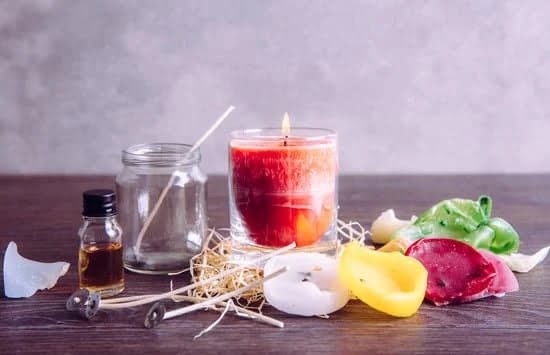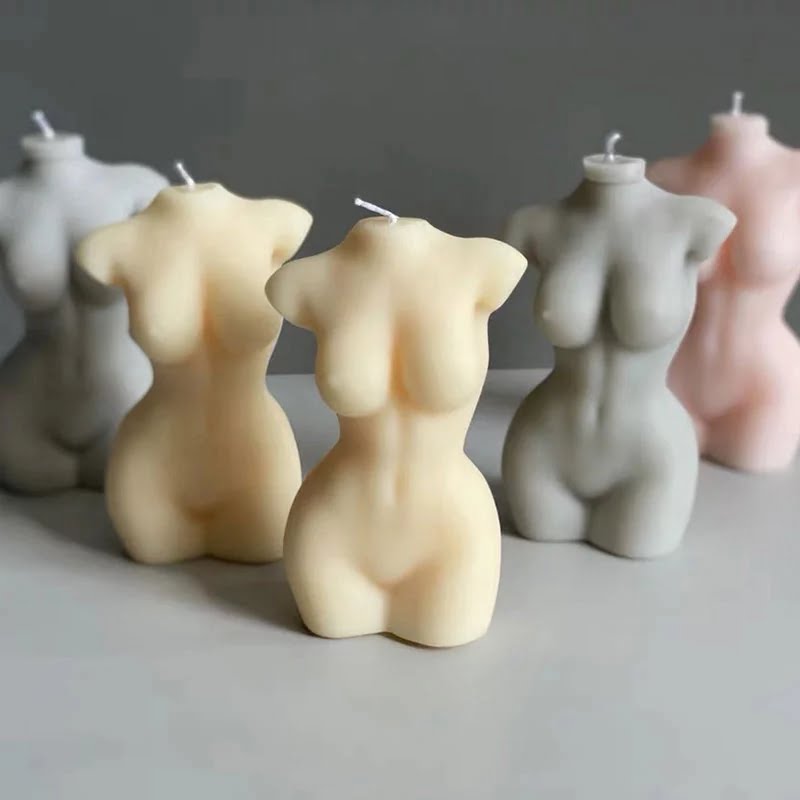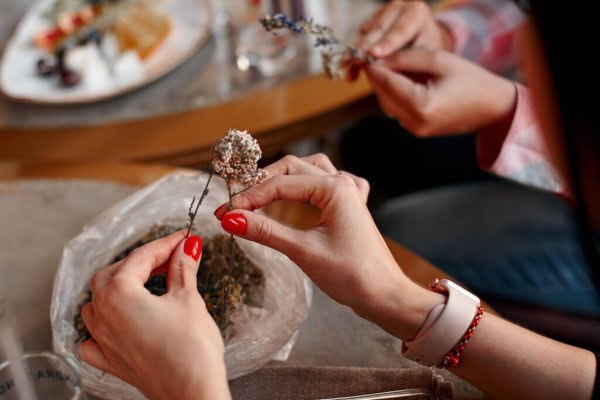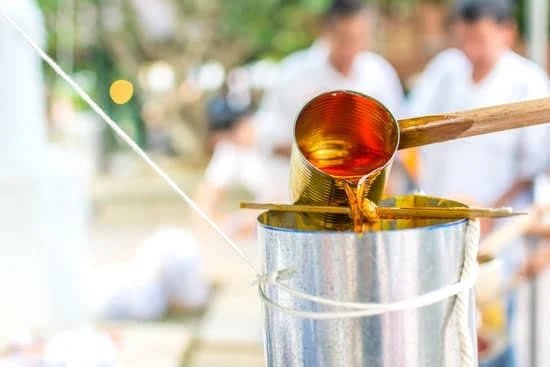Introduction
Making candles at home can be both relaxing and rewarding. Creating your own scented or colored wax creations is a fun way to spend your time. It also allows you to customize the size, shape, and scent of the candle to match whatever aesthetic you desire. In addition to the enjoyment of making candles at home, there are cost benefits as well. Below we will discuss all the costs associated with making candles at home and why it is so much more cost-effective than purchasing expensive pre-made candles from stores.
Despite initial investment in supplies, up front costs for making candles at home is minimal compared to what one would spend to buy a candle from a store. The biggest cost saving measures generally come from buying in bulk and choosing cheaper ingredients to use in the mixture (by this, we mean vegetable based waxes and lack of additives such as dyes or fragrances). With waxes costing around $7 – $20 per pound depending on type and fragrance oils going for approximately $10 per bottle, it’s easy to see how creating your own homemade candles can save you a good chunk of change. You might also find that you can get further discounts by signing up for loyalty or free-shipping programs with suppliers or buying items second-hand if available. Additionally, when using materials such as glass jars with lids sourced directly from thrift stores, the DIY approach helps reduce waste since these jars can be re-used multiple times over!
Overview of the Different Types of Candle Wax
There are a variety of wax types that can be used to make candles at home. Commonly used waxes are paraffin, soy, beeswax, and palm wax. Each type of wax carries different costs and characteristics.
Paraffin is the most economical option for candle making. It is relatively easy to work with and has a long burn time. Soy wax is a renewable resource, making it more environmentally friendly than paraffin. While it does cost more than paraffin wax, soy candles burn longer and have clean burning properties. Beeswax is another eco-friendly option for candle making but it also costs more than paraffin or soy wax due to its high demand worldwide. Finally, palm wax has similar characteristics to soy wax but produces highly decorative pillars with an intricate crystal structure when hardened around the wick of a candle, giving it popularity among home crafters.
No matter which type of wax you choose for your candle making project, each will require additional supplies including wicks, molds or containers, fragrance oils and dyes where necessary, as well as any special tools such as heating elements or safety equipment needed in the process. Since these supplies may also vary in cost depending on quality and amount required, it is important to take them into account when considering the overall cost of home-made candles before starting any project.
Considerations for Different Candle Types and Sizes
The cost of making candles at home will depend on the size and type of candle being created. Those looking to create pillars, votives, or tealights will need wicks, wax, dye, fragrance oils, and specific molds for each individual candle shape. Pillar candles may require an inner core or pre-waxed wicks for stability; votive candles need to be set in heat resistant cups; and tea lights either use an aluminum pie tin or a silicone mold with heat resistant holders. The cost for supplies such as dyes, fragrances, and molds can range from a few dollars to twenty dollars depending on the quantity purchased and where they are bought from. Additionally, the amount of wax needed will vary greatly depending on your desired size as well as the melting point of that type of wax used; soft wax (such as soy) melts at a lower temperature than hard wax. Lastly, most people using their own home kitchen will opt to melt their wax either in a double boiler on the stove top or in the microwave; but those looking to create larger batches might consider investing in an electric pot warmer designed specifically for melting down large amounts of candle wax. All in all, it’s important when making your own candles at home to factor not only costs associated with your supplies but also electricity if you are using electric warmers to ensure you have enough budget to make your candle dreams come true.
Essentials for Building Your Own Candle Making Kit
Making your own candles at home is a great way to be creative, cost-effective and environment friendly. To get started you will need to put together a candle making kit. The essential items you will need are:
Tools: You will need some tools for the job, such as wick holders, wick centering devices, stainless steel scissors, pouring pitchers and wax thermometers.
Wax: Paraffin wax is a popular choice for beginners since it is easy to work with and readily available. Soy wax can also be used; however this type of wax is more expensive than paraffin wax and requires additional steps while melting it.
Fragrance Oil and Colorants: Fragrance oils can be added to your candles to create unique scents while dyes or colorants will add a visual effect to your candles. Make sure when purchasing these items that they are specifically made for use in candles”not all fragrances are safe for candles so read labels carefully before purchasing any that you plan on using.
Molds and Containers: You will also need molds or containers for your candles depending on the shape and size that you want them in. If desired, you can also invest in silicone molds which provide greater flexibility in creating designs as well as being easier to clean out once the candle has been made.
Wicks: Cotton core or paper core wicks are most commonly used for container candles but there are other specialty wicks available for certain types of application specific to certain styles of molding or container sizes.
Other Supplies: Other supplies such as safety goggles and gloves should also be considered when putting together your kit should there be splashing hot wax during the process of making the candles allowing you piece of mind that all necessary measures have been taken while operating around fire.
Additionally, heat guns may come in handy if parts of the poured candle become distorted while cooling down ” this allows you to smooth out parts quickly instead of shattering them completely. Finally tissue paper may sometimes be needed when attempting advanced projects beyond simply pouring paraffin wax into molds; different colors of this type of paper can act as backdrops highlighting intricate designs created with melted colored wax allowing greater scope than what is typically imagined possible with retailer bought molded candles.
Estimating the Cost of Making Candles for Different Types and Sizes
When making candles at home, it is important to consider the factors that can affect the cost. Depending on the type of candle being made, sizes, and decorations added – the cost of making a batch of candles can vary greatly.
For example, a batch of tea lights will require small plastic applicators for safety when handling hot wax. The cost for small supplies such as these may come down to pennies per candle, but when multiplied by the number of candles included in a batch it adds up.
The size of the candle will affect how much wicks, wax, dyes, and naturally occurring materials like essential oils will be necessary to make them. Generally speaking, large candles will require more supplies than smaller ones resulting in an increase in costs. Candles that require double-wicking or added colors and fragrance layers will also impact their overall production price.
In addition to these core ingredients, any adornments used such as decals or pine cones will drive up their production cost even further. Once all of the supplies are accounted for don’t forget about overhead costs for overhead such as electricity used during production or packaging supplies needed to brand and market the finished product. Overall these factors must be considered in order to determine the true cost incurred from producing each individual candle throughout a batch process
Money-Saving Tips for Sourcing Materials and Supplies
Making candles at home can be an enjoyable and rewarding activity. However, the cost of supplies and materials can soon add up, so it’s important to be mindful of how much you spend on your project. Here are some tips for sourcing materials and supplies without breaking the bank:
1. Look for Coupons ” Many stores offer coupons or discounts on candle-making supplies, so be sure to check online and with your local stores to see if there are any available before buying anything.
2. Shop Around ” Don’t buy the first thing you see! You may find better deals or higher quality products by shopping around before making a purchase.
3. Buy in Bulk/Wholesale ” Buying bigger quantities of items such as wax, wicks, and fragrances can result in big savings in the long run. Plus, getting larger quantities ensures that you won’t run out of supplies too quickly.
4. Repurpose Household Objects ” Items such as jars or tins for votives can often be found around the house rather than buying new ones from a store. There are also many tutorials available online about upcycling common items for use in candle-making projects.
5. Use Natural Materials ” Simple elements like beeswax, herbs, oils, used tea leaves and natural elements from nature (such as pinecones) can add a beautiful touch to your homemade candles and save you money compared to store-bought fragrances or dyes that contain chemicals that may be toxic when burned in smaller amounts.
Ideas for Reducing the Cost of Making Candles
When it comes to making candles at home, there are a few ways to reduce the cost. You can purchase wholesale supplies from bulk suppliers to reduce cost when buying in bulk. Scouring thrift stores, garage sales, and online marketplaces for used candle molds can help you get the materials that you need without blowing your budget. Looking into using natural and sustainable ingredients will help you save money as well. Instead of using paraffin wax for your candles, consider using soy wax or beeswax instead. Using different kinds of dried flowers and herbs for decoration will also help give more flavor and personality to your candles while keeping costs low. Additionally, if you have access to an essential oil distiller, you can make fragrances yourself to use in place of store-bought fragrances which can be expensive. Lastly, instead of paying for packaging materials such as cellophane bags or boxes, explore other free options like reusing food containers or paper bags to package your creations!
DIY Tutorials for Making Candles at Home
Making candles at home is a great way to save money, as well as have fun with creating unique candles that you can be proud of. Depending on the type of candle you are making, the costs vary. For example, if you plan to make beeswax candles then you may need to invest in some higher quality supplies like beeswax sheets, wicks and molds. However, if you are making soy wax or paraffin waxcandles then the costs can be quite minimal. You may only need to purchase paraffin or soy wax beads or blocks for melting, some essential oils for scent and wicks for each candle. In addition to these materials there are also tools such as measuring tools and pots for melting wax that can help when making lots of candles at once. If you purchase supplies in bulk rather than individual items this can also help reduce your candle making costs at home. Overall the cost of specifically materials and tools should not exceed around $30 depending on how many candles you plan to make.
Conclusion
Creating a custom candle at home is not only an affordable option, but it’s a great way to inject some creativity into the process. Whether you decide to purchase supplies from a craft store or take advantage of other materials lying around the house, all that’s needed to start brainstorming unique design ideas for your homemade candles! Making candles at home will ultimately save money and provide a way for anyone to explore their own creativity. With minimal components, such as wax, a wick, jars, and colorants or fragrance oils, you can be on your way to creating beautiful, personalized candles of various forms. As an additional bonus, making candles instead of purchasing them reduces waste and helps preserve the environment! Ultimately, making candles at home is an affordable and creative experience that everyone should give a try.

Welcome to my candle making blog! In this blog, I will be sharing my tips and tricks for making candles. I will also be sharing some of my favorite recipes.





